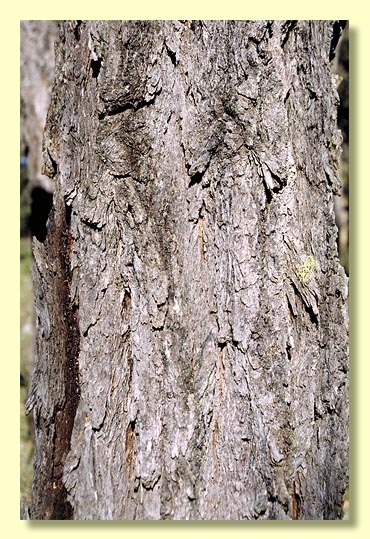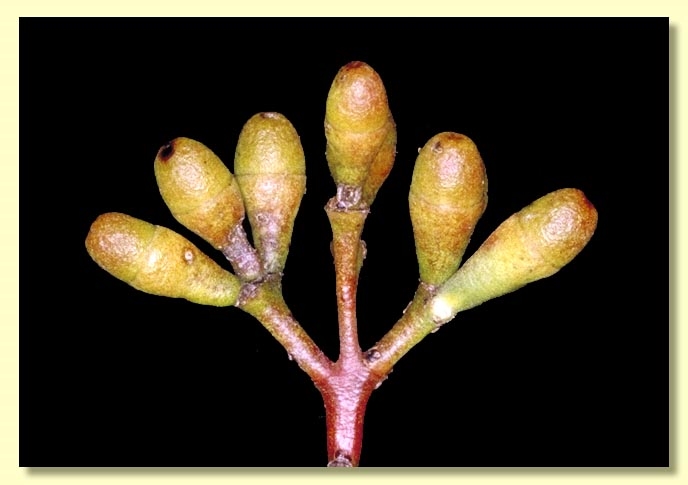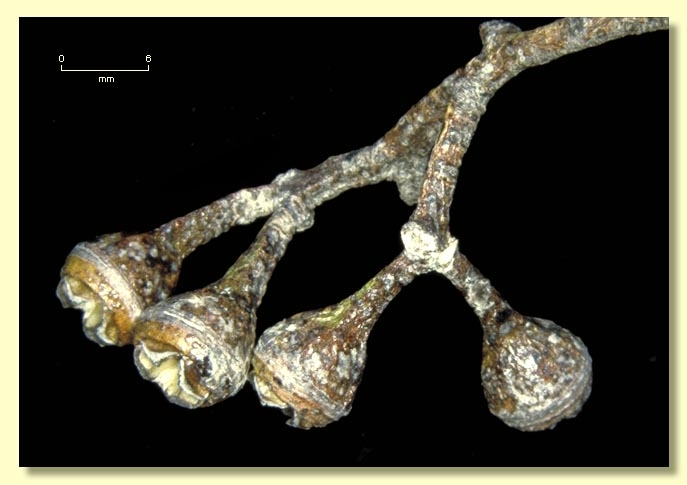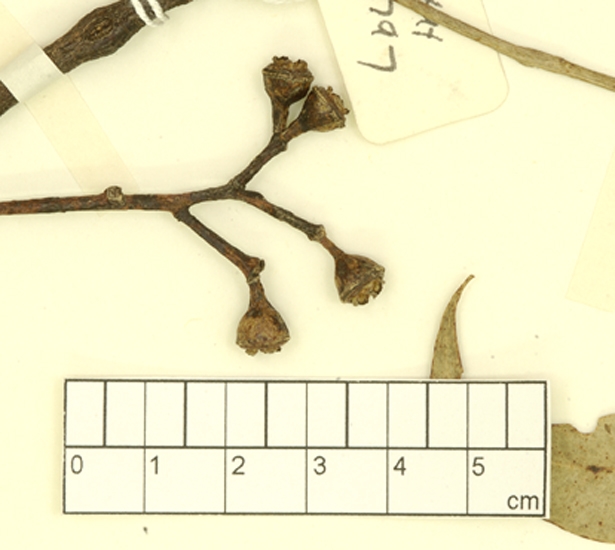Euclid - Online edition
Eucalyptus ophitica
Eucalyptus | Symphyomyrtus | Adnataria | Apicales | Siderophloiae | Subglaucae
Ironbark to 3–7 cm diameter branches, grey.
Juvenile growth (coppice or field seedlings to 50 cm): stem square or rounded in cross-section; juvenile leaves always petiolate, opposite for 4–6 pairs then alternate, ovate to lanceolate, 7.5–20 cm long, 3–7 cm wide, base tapering to petiole, dull, green.
Adult leaves alternate, petiole 1.5–2.8 cm long; blade lanceolate, 7.8–17 cm long, 1.7–2.5 cm wide, undulate, base tapering to petiole, concolorous, glossy or dull, green, side-veins greater than 45° to midrib, very densely reticulate, intramarginal vein parallel to and just within margin, oil glands obscure or apparently absent.
Inflorescence terminal compound, peduncles 0.4–1 cm long, buds 7 per umbel, pedicels 0.3–0.8 cm long. Mature buds clavate to ± cylindrical, 0.8–1 cm long, 0.4–0.6 cm wide, scar usually present (first operculum sheds very early in bud development), operculum rounded, stamens erect or irregularly flexed, anthers cuboid or cuneate, adnate, slits or pores separate, style long, stigma blunt or pin-head shaped, locules 4 or 5, the placentae each with 4 vertical ovule rows. Flowers white.
Fruit on pedicels 0.2–0.8 cm long, cup-shaped, obconical or hemispherical, 0.4–0.6 cm long, 0.5–0.7 cm wide, disc raised-convex to oblique, valves 4 or 5, exserted.
Seeds brown, 1.5–2 mm long, flattened-ovoid, sometimes lacunose, dorsal surface shallowly reticulate, hilum ventral.
Cultivated seedlings (measured at ca node 10): cotyledons oblong to reniform; stems square in cross-section; leaves always petiolate, opposite for 4–6 nodes then alternate, broadly lanceolate, 7.5–11 cm long, 3–7 cm wide, base tapering, margin entire, apex pointed, slightly discolorous, dull, grey-green.
Flowering time unknown.
A small ironbark tree restricted to the Baryulgil serpentine belt in the Upper Clarence, in hills of north subcoastal New South Wales. It is closely related to three Queensland species, E. taurina, E. tholiformis and E. beaniana. All four species have ± oblong to fusiform buds with a blunt conical to rounded operculum. They are separated by the shape and size of their juvenile leaves. E. ophitica has broad lanceolate juveniles 3–7 cm wide, E. tholiformis has ovate juveniles 2.2–4 cm wide, E. taurina has lanceolate juveniles 1.4–3 cm wide and E. beaniana has linear juveniles 0.4–0.6 cm wide. Within its area of occurrence it should only be confused with E. siderophloia, E. crebra and E. fibrosa. It differs from E. crebra by having much broader adult and juvenile leaves, the more elongated buds with a round operculum, and fruit with slightly exserted valves. It is much smaller in the buds and fruit than E. fibrosa and lacks the long horn-shaped operculum and the prominent exserted valves of that species. E. siderophloia differs by having diamond-shaped buds with an acute operculum (buds ± oblong to fusiform with a rounded to blunt conical operculum in E. ophitica).
Species of ironbark in New South Wales other than those mentioned above will have all stamens inflexed and outer stamens infertile, as can be seen by dissecting a mature bud.
















